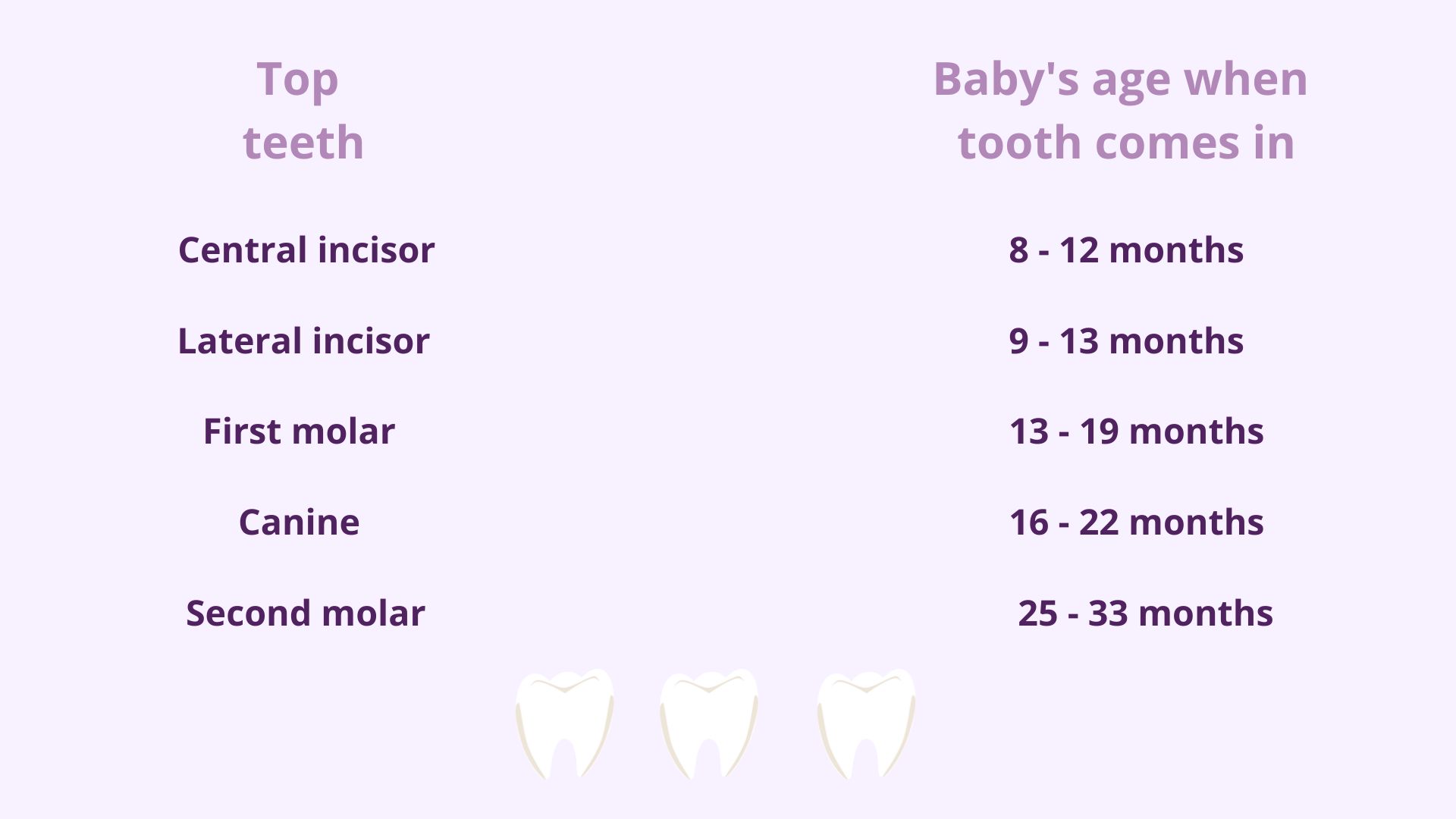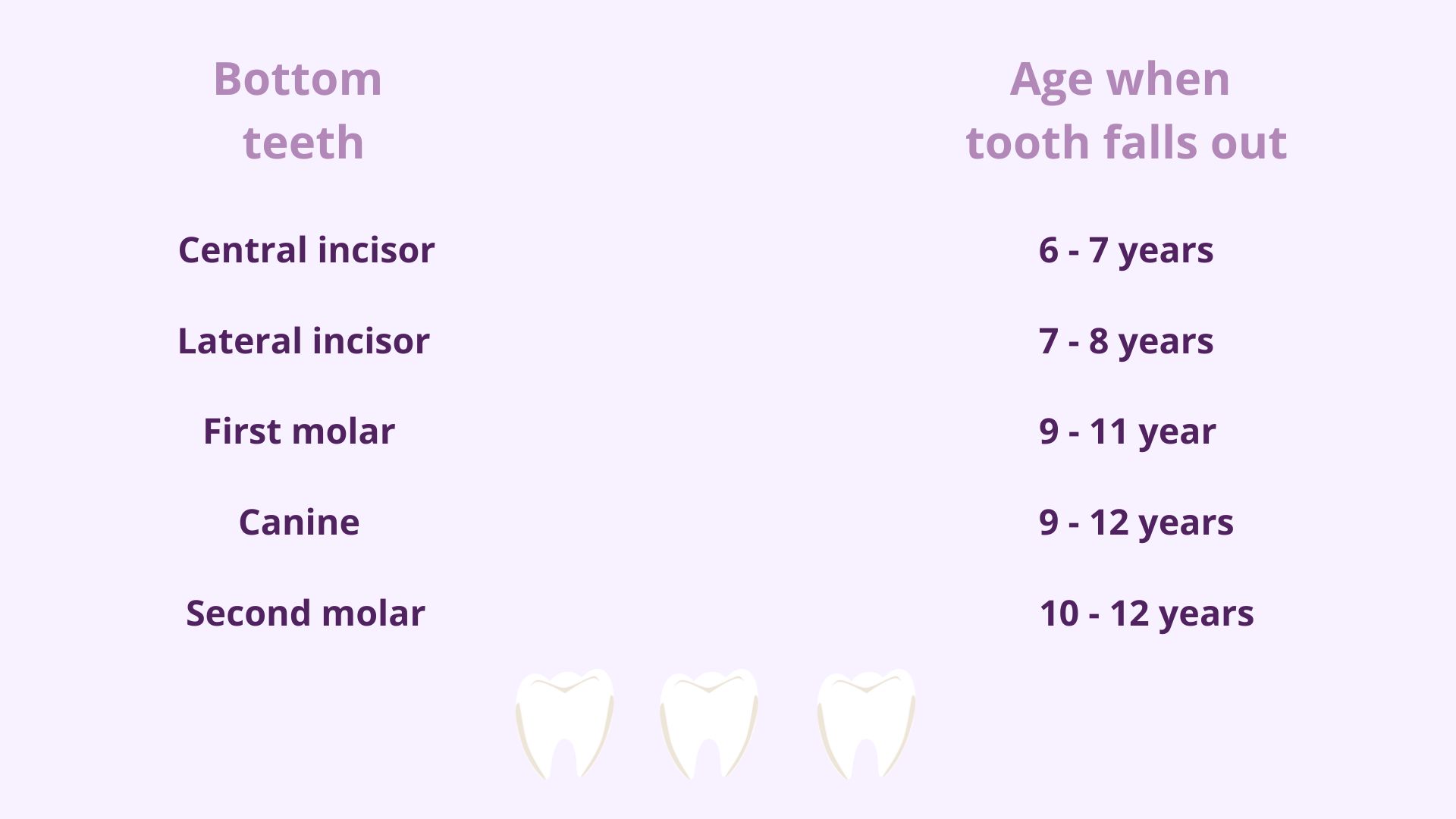Baby teeth chart: Which teeth erupt first and which are the most painful?
A baby teeth chart can give you a heads up as to what your baby is going through

A baby teeth chart shows - month by month - when to expect which teeth, it's also a good guide to know when your baby will be fussier as teething can be painful and affect their mood, eating, and sleeping.
As with any baby development milestones, including the first time they smile, their first words and first steps these all happen at different times for different children. This is the same with teething, teeth tend to come in from around the 6-month age, some babies are earlier some are later. Baby teeth are important and those first two little bottom front ones are the cutest. Check our our baby teeth chart, it makes it easier for you to know which tooth to expect when and to be ready for them.
The NHS recommends seeing a dentist regularly from the moment baby teeth emerge, this helps children to get used to the dentists and oral examinations.
Baby Teeth Chart
A baby teeth chart will give you a rough idea of when teething will really kick up a notch for your little one.
What we know as 'baby teeth' are professionally referred to as primary or deciduous teeth and they are temporary placeholders for the permanent set. And, when it comes to baby teeth there’s a wide range of normal. The average first baby tooth erupts - or 'comes through' - at 6 or 7 months, but first teeth can emerge at around 12 months old (or even later). While some babies can cut their first teeth very early, at around 3 or 4 months old. All babies are different.

As Family Editor here at Goodto.com I also have a child, he's almost 5 now, but when he was a baby he cut his first bottom teeth just after 6 months. And I noticed change in him before they'd even cut the gum. My health visitor told me that teeth shuffle below the surface of the gum, finding their place before pushing through and this can be uncomfortable for little ones.

Ted, 6 months and 12 days
What order do baby teeth come in?
The bottom two front teeth, the incisors, are usually the first teeth to come through. This usually happens around 5 - 7 months old. These are followed by the top incisors, front teeth, at around 6 - 8 months old.
Parenting advice, hot topics, best buys and family finance tips delivered straight to your inbox.
Teeth usually come through in pairs, with one on each side of the upper or lower jaw, until all 20 teeth have arrived. Usually by the time your child is 2 1/2 to 3 years old, all of the primary teeth will have come through or 'erupted'.
Below is a typical baby teeth timeline, so you know when to be on the lookout for baby teeth eruption;
- Upper central incisor: Erupts 8-12 months
- Upper lateral incisor: Erupts 9-13 months
- Upper first molar: Erupts 13-19 months
- Upper canine or cuspid: Erupts 16-22 months
- Upper second molar: Erupts 25-33 months
- Lower central incisor: Erupts 6-10 months
- Lower lateral incisor: Erupts 10-16 months
- Lower first molar: Erupts 14-18 months
- Lower canine or cuspid: Erupts 17-23 months
- Lower second molar: Erupts 23-31 months


Is teething painful for babies?
Yes, it's very painful. Teething is where the tooth is cutting the fresh gum to make room to come through. You may notice your baby becoming fussier, more clingy, crying more and gumming on your hand, necklace anything they can reach. The pressure of gumming on something can help relieve the pain. The pain of teething affects mood, appetite, sleep and can last for around 8 days. The good news is that the pain flares as the tooth is breaking through the gums, but then typically subsides.
Signs and symptoms of teething are;
- Red cheeks
- Dribbling
- Gumming and chewing on objects
- Mild temperature of 37+
- Fussier and clingier than usual
- Rubbing or pulling on one ear
Which teeth hurt the most coming through?
While all teeth bring with them pain, the molars - at around 25 months old - tend to be the most painful when the come through. This is because they cover a larger surface area.
What age do baby teeth fall out?
It's around the ages of 6 and 7 years old that your little one will start to notice wobbly teeth. The primary teeth will start to fall out to make room for the permanent teeth around this age, though as always, all children are different. And sometimes there can be as long as a year delay in this happening. A study shows that losing teeth is probably one of the first biological changes to their own body that children experience consciously.


You might also like;
Are baby teeth important?
Baby developmental questions
Child development stages: ages 0-16 years old
Stephanie has been a journalist since 2008, she is a true dynamo in the world of women's lifestyle and family content. From child development and psychology to delicious recipes, interior inspiration, and fun-packed kids' activities, she covers it all with flair. Whether it's the emotional journey of matrescence, the mental juggling act of being the default parent, or breaking the cycle of parenting patterns, Stephanie knows it inside out backed by her studies in child psychology. Stephanie lives in Kent with her husband and son, Ted. Just keeping on top of school emails/fundraisers/non-uniform days/packed lunches is her second full-time job.